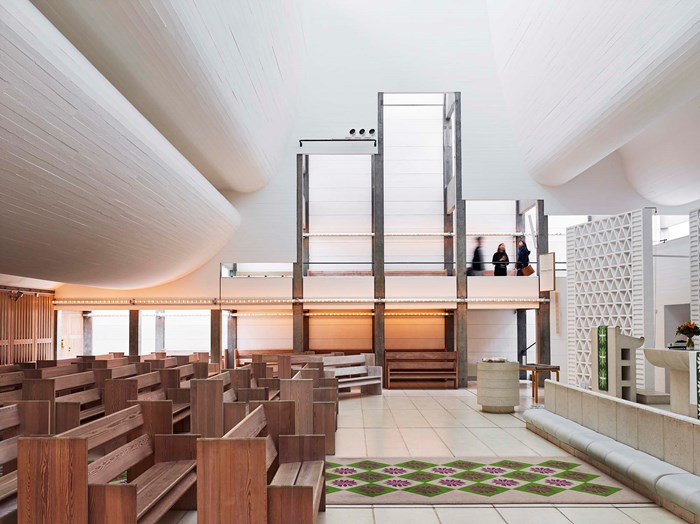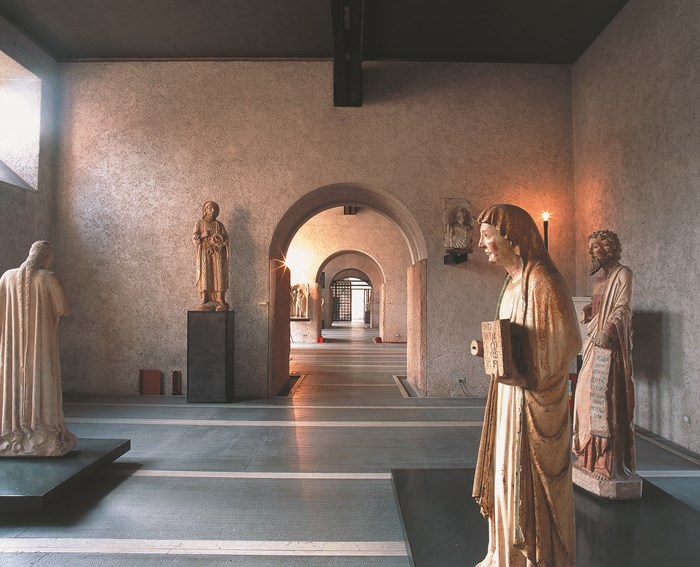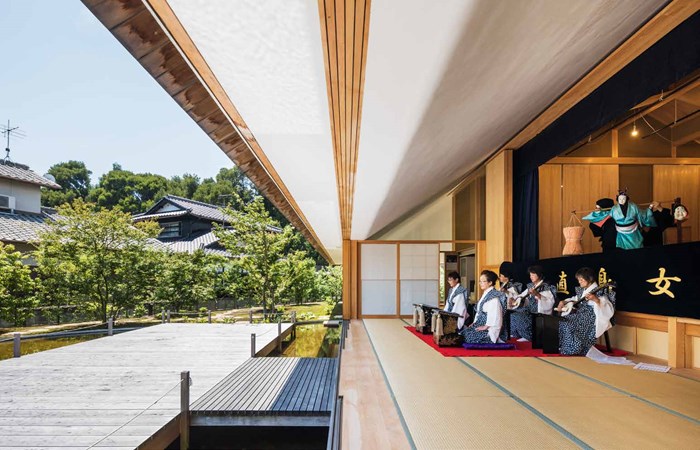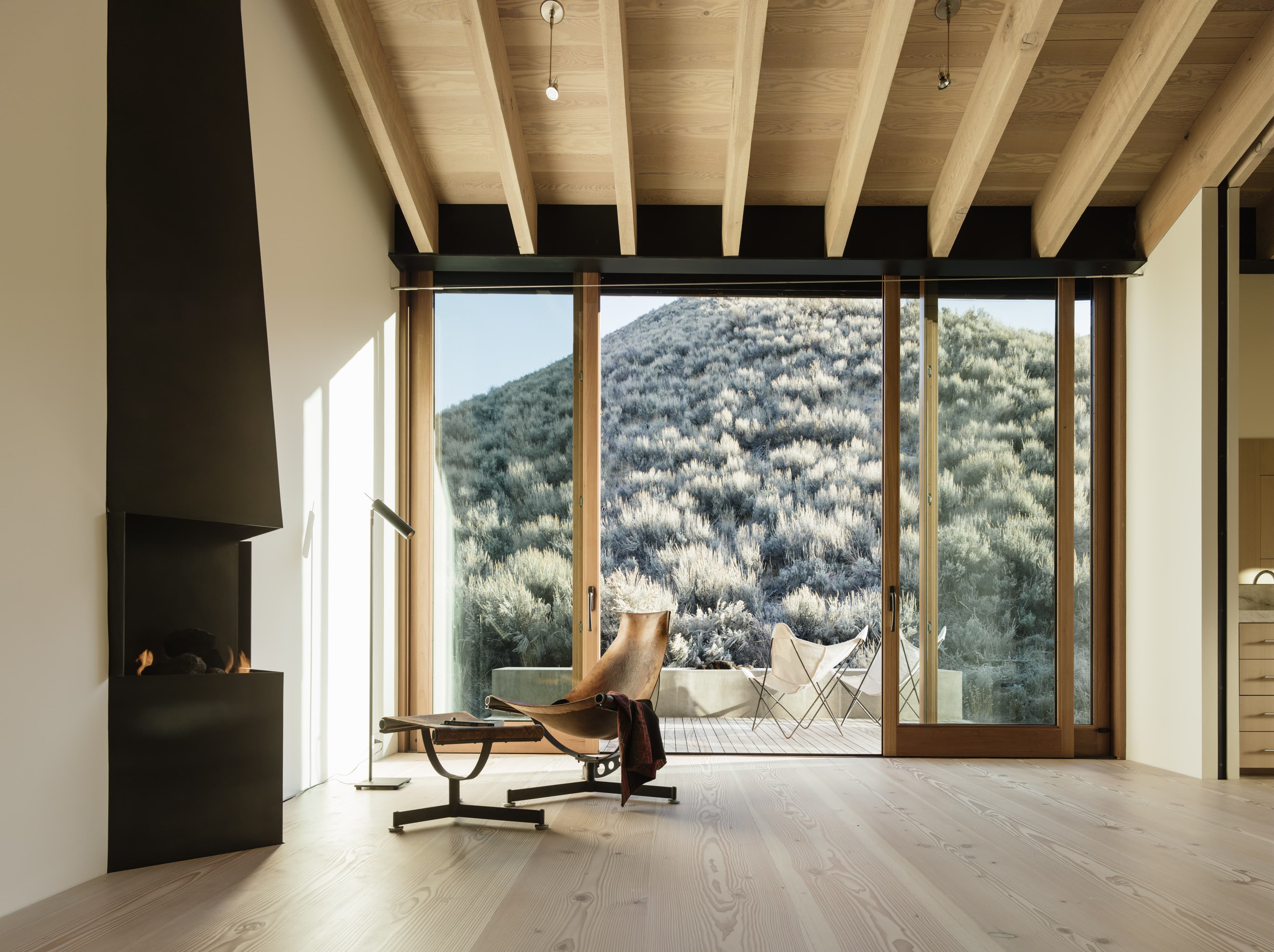
Rick Joy is an award-winning American architect who has lectured, taught, and served as a jury member at a number of prestigious universities and schools of architecture around the world, including Harvard, Yale, and the École d’Architecture in Paris. Born in 1958 and raised in Maine, Rick studied music at The University of Maine before graduating from the architecture school at The University of Arizona in 1993. Since then, Rick has led Studio Rick Joy, a cooperative, Tucson-based architectural practice engaged in architecture, planning, and interior projects around the globe.
The core values that drive Studio Rick Joy’s work arise from an environment in which creativity and discovery thrive alongside expertise and experience. The work of the studio is the result of the talent and energy of a diverse team and reflects concepts that arise from a practice of comprehensive observation and generosity of approach. Exactitude, details that support ideas, and a respect for the origins of craft give rise to design and materials that pay respect to one another and to the culture of a place. By being sensitive toward the world and cherishing each site's spirit, we produce architecture that lives well in its surroundings and that becomes a stage for daily life.
Recently, Daylight & Architecture had a chance to interview Rick about his winding path to becoming an architect, the inspiration that he draws from, ‘paying attention to life,’ and the power of natural light to create atmosphere in architecture.
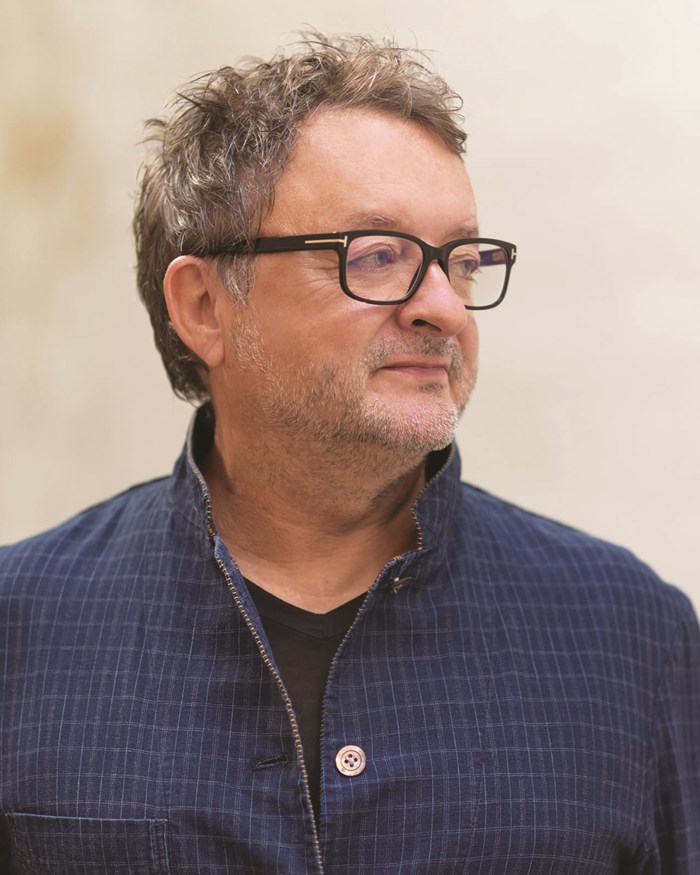
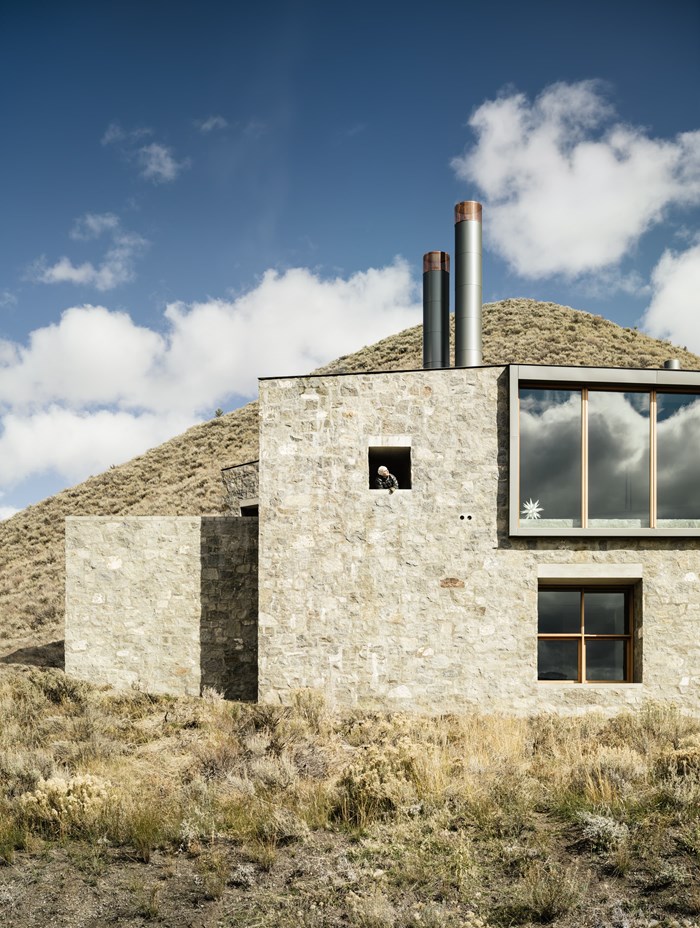
D&A: Growing up, were you interested in architecture?
RJ: When I was a little kid, my dad was a printer and sometimes he would bring home giant rolls of paper that were bigger than our kitchen table. Then I would take these giant pieces of paper and make these huge drawings of underground cities. I’m talking about 5ft by 10ft drawings of underground worlds with every little thing drawn in precise detail: cars, boats, everything. So, I guess you could say that I’ve always been interested in the 3D world of building things.
D&A: On your firm’s website, you list, a, ‘mixture of creativity and discovery alongside expertise and experience’ as one of your office values. I wonder if you could talk a bit more about this?
RJ: Well, our culture is really on the top of our minds right now. I think we’re still devoted to making the office a place to learn, no matter how young or how senior you are. We don’t do a lot of hierarchical thinking in our office. It’s more about bringing your best ideas and thoughts to the table and, honestly, that’s it. I learned early on that I don’t want everyone I work with to be graduates from the local university here in town. We don’t want everybody here to think in the same way or use the same process. Over the years, I think we’ve had more than 100 people from other countries working in our office, and that has been so valuable for us. Right now, for example, we have folks in the office from Chile, South Africa, and several from Mexico. We just hired someone originally from Morocco and another from Spain. Another guy in my office is Iranian, but was born in Sweden.
If you look through the projects on our website, you can see that all of our projects have a very special celestial connection to light.
D&A: When starting work on a new project, at what point in your process do you start thinking about the role of daylight in a design?
RJ: Generally, this starts right from the beginning. When I was younger and working on my own, I used to go camp out on a job site and smoke a joint and just try to get a deep feeling for the place itself. But I’m in my mid-60s now and so I can do more or less the same thing intuitively nowadays. It happens pretty fast, actually. Once we know what we’re working with, the ideas for how to take advantage of natural light come into play right away and we get to work. If you look through the projects on our website, you can see that all of our projects have a very special celestial connection to light. In those projects, I think you can see that we pay attention to the details, the way light moves during the day and over the course of the year. We don’t like dark corners; we like natural light to be present in every room of a building, when possible, whether it comes through windows, doors, or lightwells, it needs to be there.
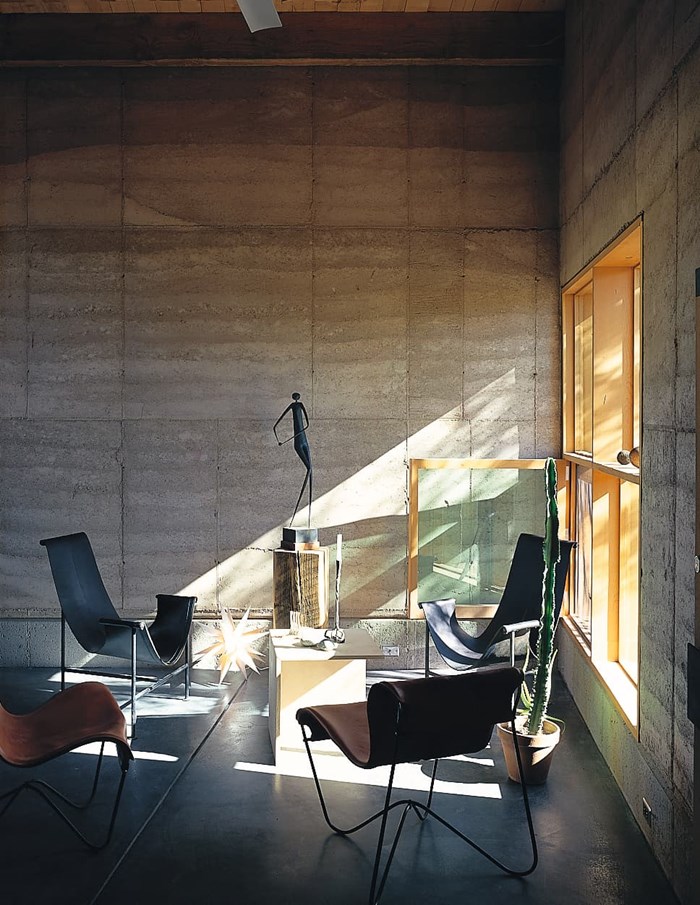
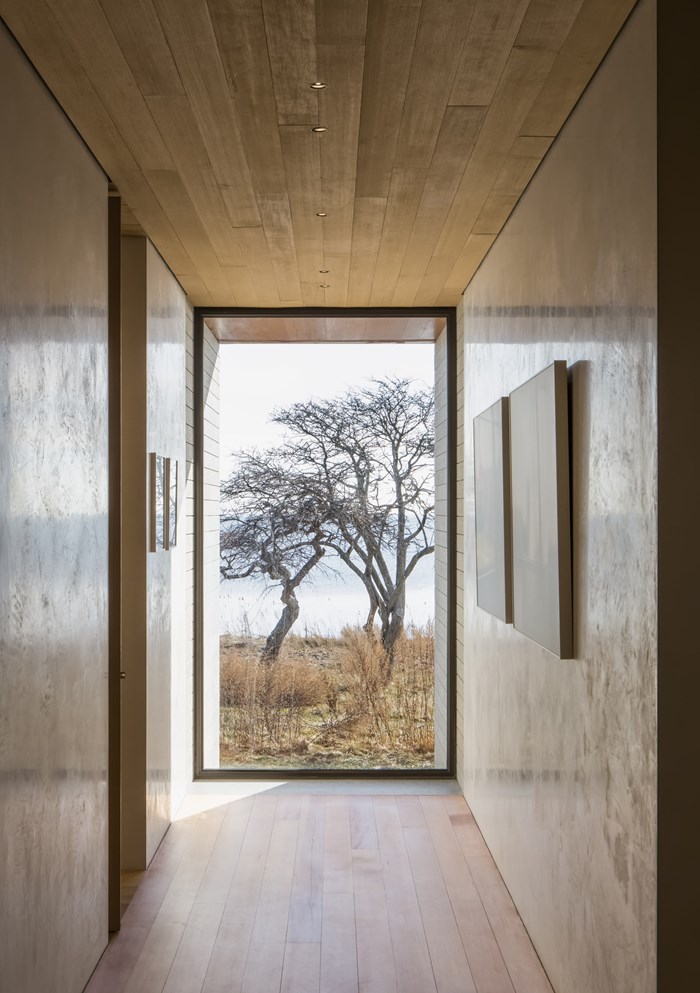
D&A: Is there a specific project that you feel best embodies these ideas?
RJ: I think our Tennyson 205 project is the strongest work we’ve ever done in terms of daylighting. There are three lightwells. There’s nature and light in every room except for the closets. In the middle of Mexico City. It was just an idea, we got it done.
D&A: What about recently, any new projects that connect the indoors with the outdoors?
RJ: Well, in November, we just finished a resort in Mexico called One&Only Mandarina, an hour north of Puerto Vallarta. It’s located in a very gentle, emotional jungle area. There are 178 standalone buildings, 115 guest rooms, and at least 60 of those are treehouses that are placed 60 feet above ground.
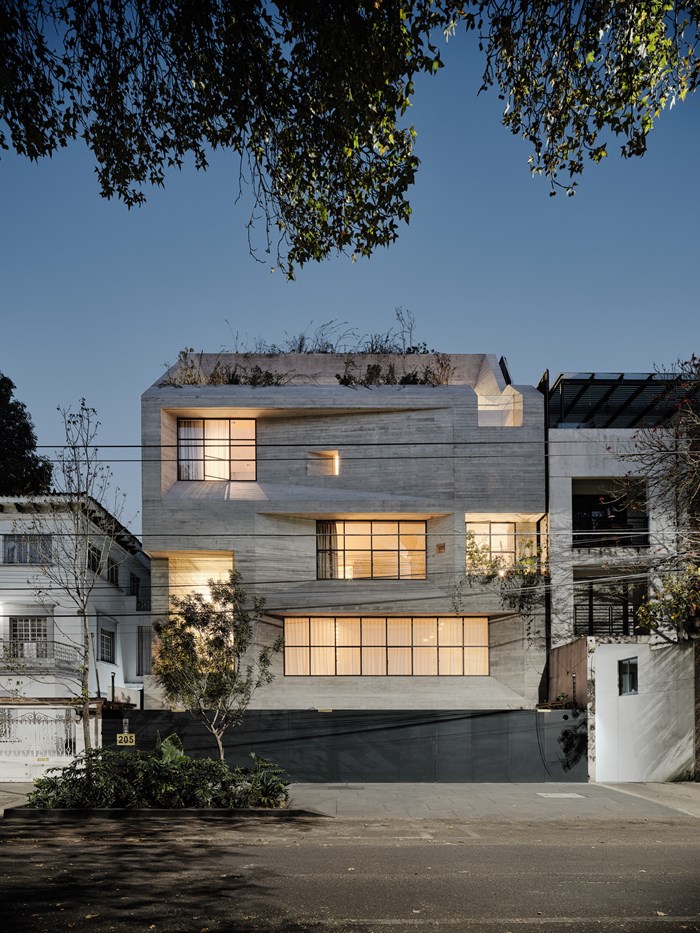
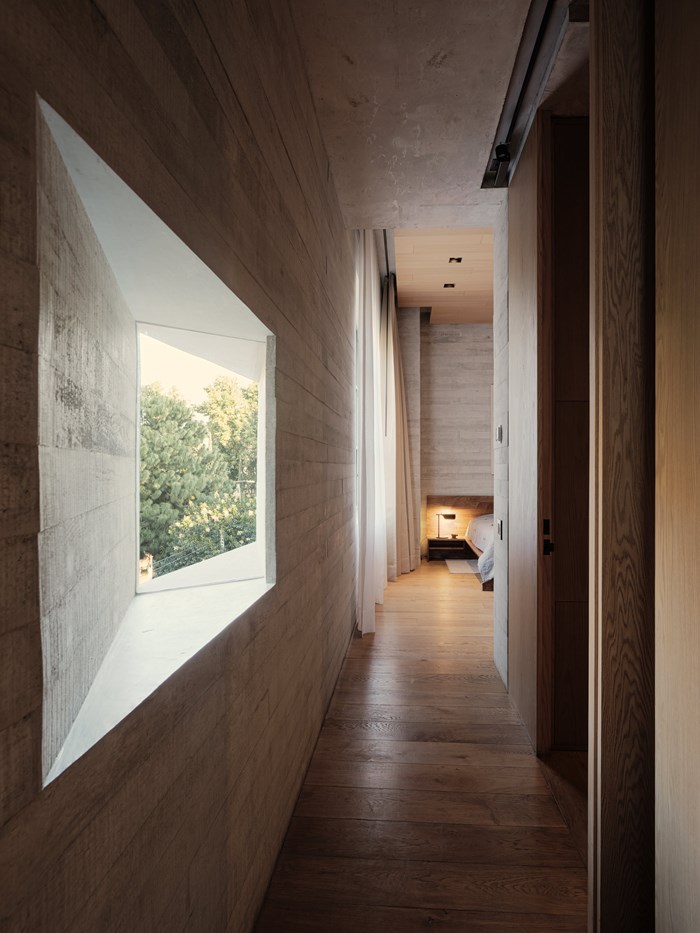
I think our Tennyson 205 project is the strongest work we’ve ever done in terms of daylighting. There are three lightwells. There’s nature and light in every room except for the closets.
D&A: What was the concept behind having so many individual buildings?
Well, nobody wanted to put a big hotel in there and cut down all the trees, so we decided on creating a kind of jungle village. The resort has an Enrique Olvera restaurant and it’s just totally insane.
D&A: This sounds a little like your drawing on the paper when you were a kid.
RJ: Yeah yeah, definitely. Interestingly, the whole complex is made of wood. This was the owner’s choice, and it was the right way to do it. The buildings are super light, floaty, and really very beautiful.
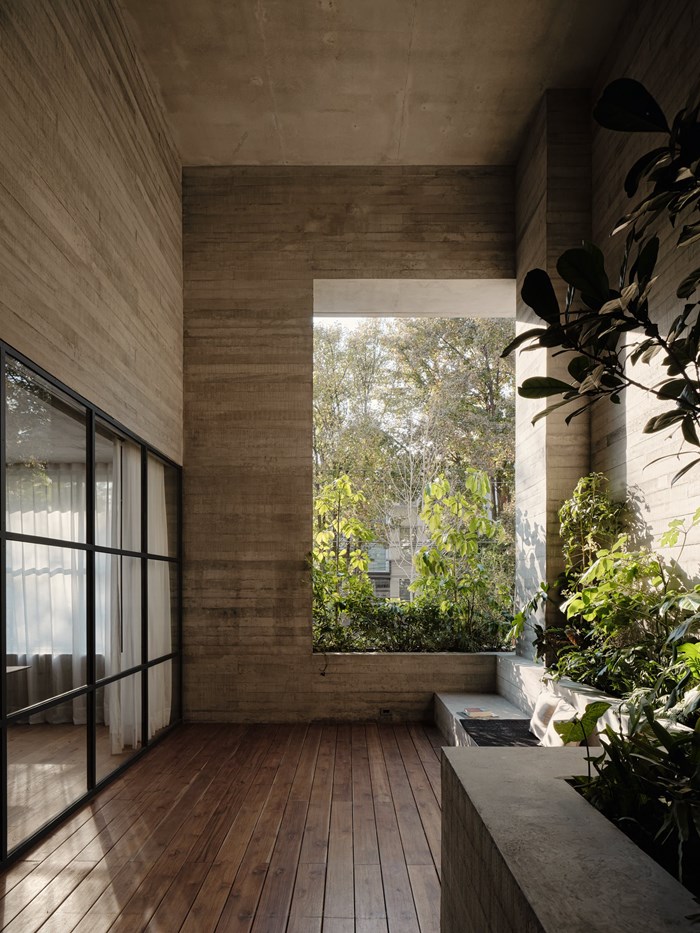
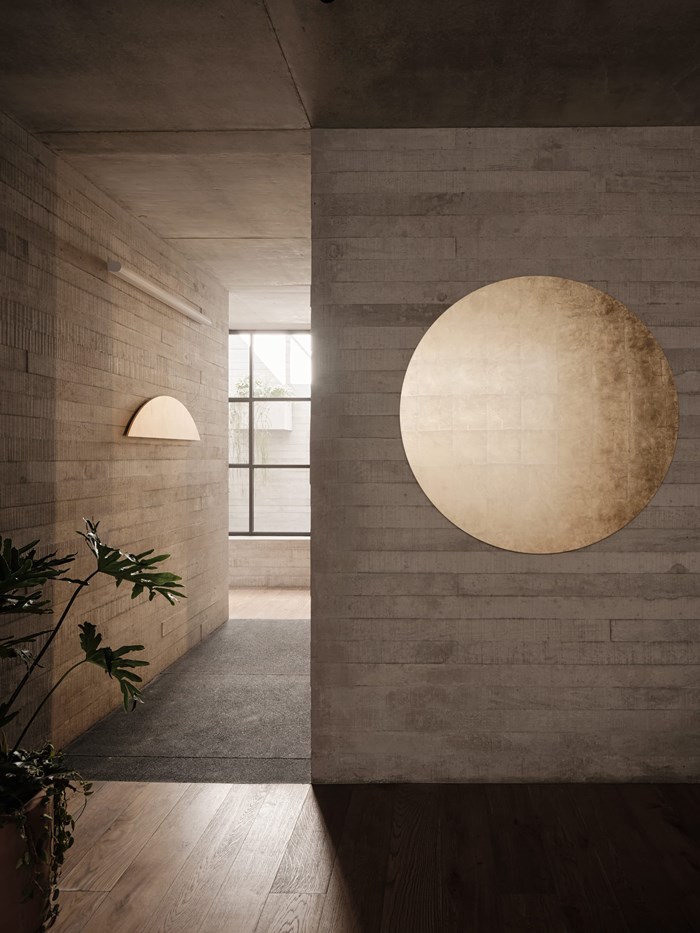
D&A: You’ve said that travel is a really important source of inspiration for you. What are you looking for when you visit other places?
RJ: Honestly, I don’t go around looking at buildings very much. When I go to Paris, for example, I find a spot at a café, get an espresso and just sit outside and watch what is happening all around me. I try to pay attention to life.
D&A: How does this process of paying attention to life translate into what you try to do in your work as an architect?
RJ: For me, architecture is about emotion and atmosphere. If you go to my website, and look at the Convent Studios project, there’s this one photo where there is side light coming in from a window – that photo, that light is totally inspired by Vermeer. Or, look at the Catalina House; the natural light comes into the house in several different ways, both through large picture windows and in smaller, more mysterious ways as well. Also, speaking of atmosphere, at Catalina House, you won’t see any images of the driveway that leads down to the house, and that’s because the only way to get there is by four-wheel drive vehicle. It’s so narrow, it’s like this rugged desert hiking path - this also creates a kind of emotion through architecture: you know you are in a wild place. That was my first house design, and I just spent the day there recently. The original client still lives there (he’s 95 years old now), and he lives in that house so beautifully, it’s one of the greatest feelings in architecture possible.
D&A: When you think about all the people who have worked in your office over the years, what qualities do you feel help to make them successful?
RJ: I think we always appreciate a very ‘switched-on’ attitude. We’re always looking for people who want to know what’s going on in the world. It’s about curiosity and discovery. If you have an ability to think atmospherically or structurally in your portfolio, we can see it immediately. And that’s what we’re looking for, because we know that’s the kind of mindset that works well here.
D&A: Zooming out to look at your career, what are the red threads that tie it all together?
RJ: Well, let me start by saying that I am completely committed to not developing a signature style, not at all. Generally, I think that’s kind of lazy. When you take a look at Desert Nomad House and the Princeton Transit Hall, for example, those two projects are polar opposites but they’re both my work. So, they’re connected in that way.
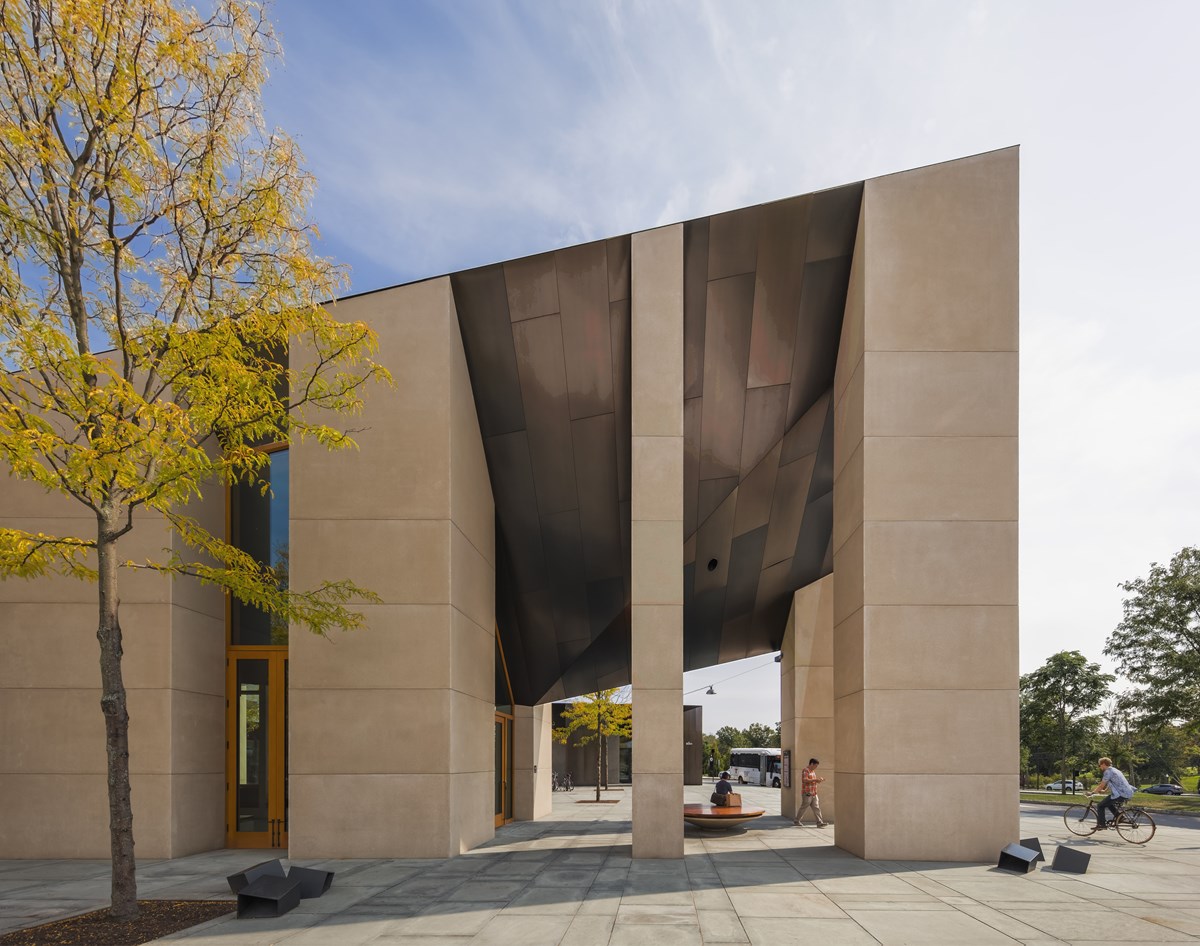
D&A: It seems to me that there is an emphasis on creating an atmosphere in all your work, perhaps this is the red thread?
RJ: Yeah, that’s definitely true. And I learned that early from being a drummer. Playing drums is all about making atmospheres with music (I can still make some grooves on the drums, by the way, which I found out recently). But with architecture, making an atmosphere comes from a different creative place. When I was in school, I would have to put down everything and go walking around in the neighborhood. And I would notice that there are different qualities of light coming from within all of these buildings. You walk by these houses, it’s blue light blinking, and the guy is watching Monday night football. Or it’s a low, warm light and a family having dinner. Those impressions stayed with me. Today, if you look at our Princeton Transit Hall, the light emanates from the inside only. We don’t just light pillars and try to make drama with light. Over the years, I keep coming back to this idea that we don’t light architecture, we want to light life.
D&A: That’s a very elegant idea.
RJ: Yeah, I think so too. I don’t know why exactly, but the quality of light at Princeton Transit Halls, it’s just so good. On our website, there’s this one photo from inside the Princeton Transit Hall, where daylight is shining down on one of the beautiful benches that Mira Nakashima made for us, and the quality of that natural light combined with the beauty of that handmade wooden bench, to me, defines the whole space. It really resonates.
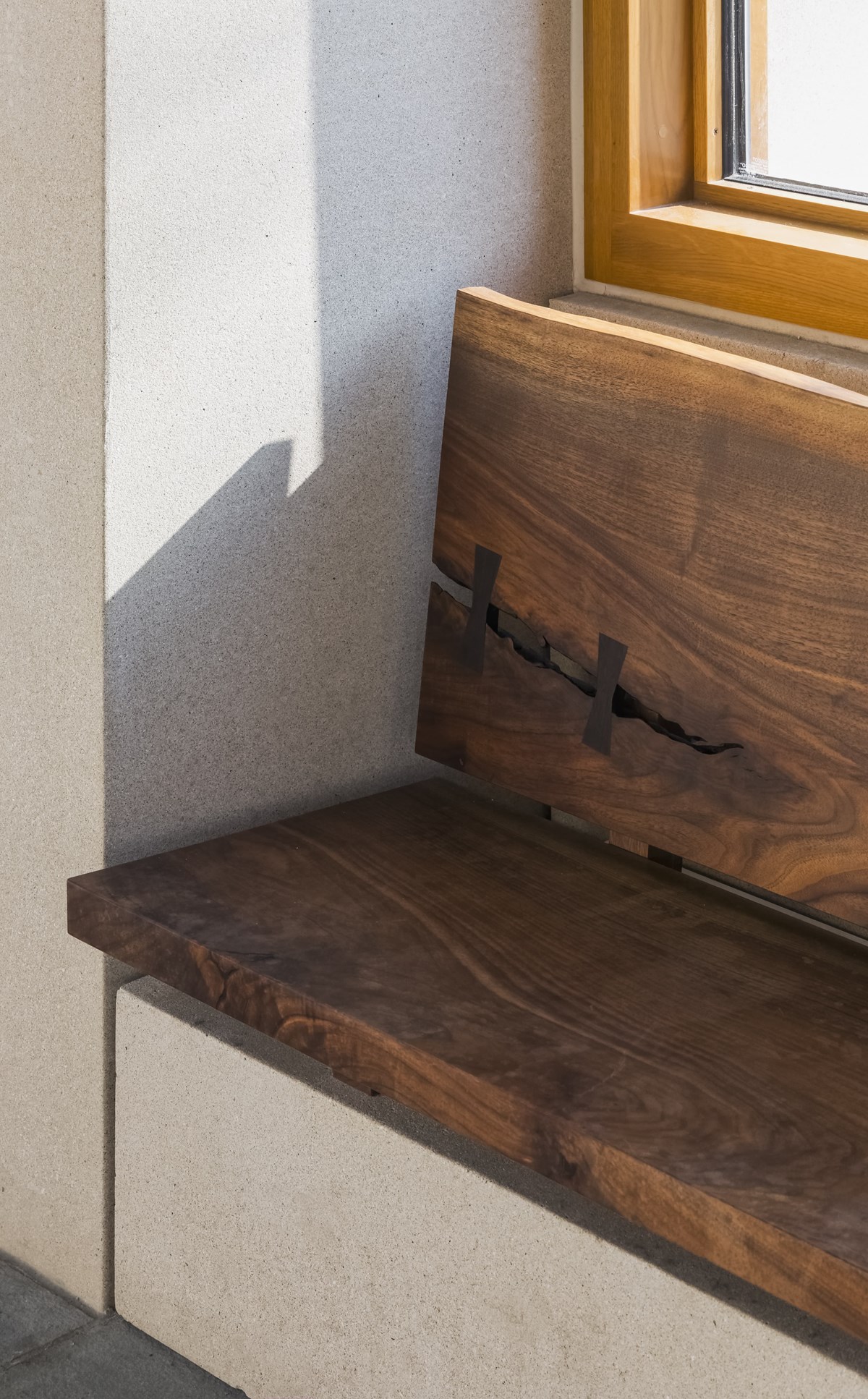
"Over the years, I keep coming back to this idea that we don’t light architecture, we want to light life."
D&A: How in the world did you get Mira Nakashima to make those benches?
RJ: Well, I like to take chances. So, I went to go see Mira Nakashima at Nakashima Woodworkers in New Hope, Pennsylvania, and I just asked her, ‘would you like to do the benches for this project?’ And she said yes – which is pretty freaking crazy. So that’s why there are Nakashima benches in the hall. As a side note, I have a friendship with one of the maintenance guys there at Princeton and he sends me pictures of how people are using the space. I’ve heard from him that locals often say, ‘Meet me at the round bench in the Transit Hall, and we’ll go on from there.’
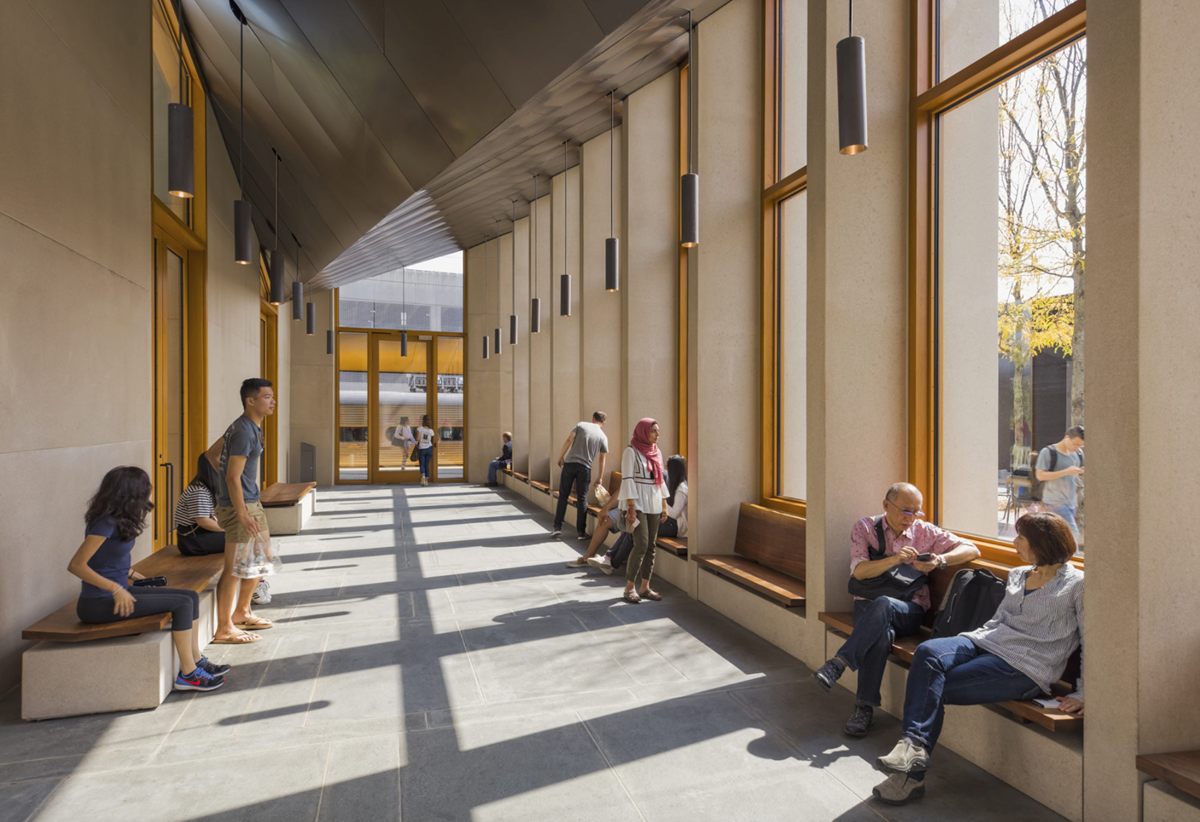
D&A: So that little spot has become a kind of local meeting or gathering place?
RJ: Yeah, that’s right. And I think there have even been weddings inside the hall as well. There’s a country club across the street, so couples do a processional, say their vows, and then walk over to the club for the wedding party. The space feels almost more like a chapel than a transit space. Then, at other times you’ve got travelers with backpacks napping on the floor or waiting for a train. I have this one photo of a kid sitting on the floor of the hall, eating a big, messy meatball sandwich, and using a Mira Nakashima bench as a table.
D&A: Oh wow, but he has no idea, right?
RJ: Right. He has no idea that that bench was made by one of the greatest woodworkers in the world. He’s just living his life; sitting there in the sun, waiting for his train, meatball sandwich spilling all over everything. I laugh every time I look at that photo.
Architect: Studio Rick Joy
To learn more about Studio Rick Joy, you can visit studiorickjoy.com. Also, you can watch a livestream lecture by the architect during the Build For Life Conference 2021, a free digital event taking place November 15 - 17. To watch Rick’s lecture, simply register here.
